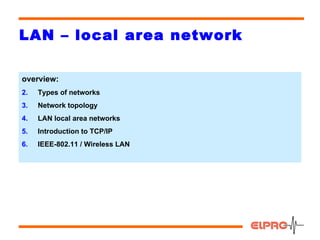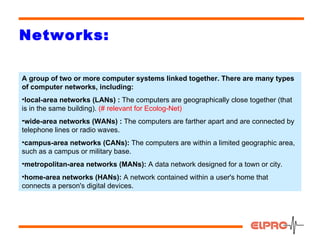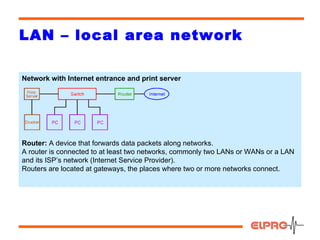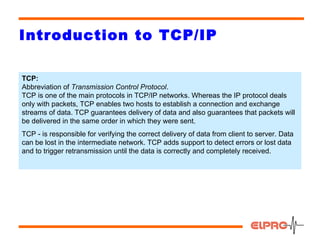This document provides an overview of local area networks (LANs) and their components. It discusses the different types of computer networks and LAN topologies. It also describes some key LAN devices like hubs, switches, routers, wireless access points, and network interface cards. It provides an introduction to the TCP/IP networking protocols and the IEEE 802.11 wireless networking standards.













